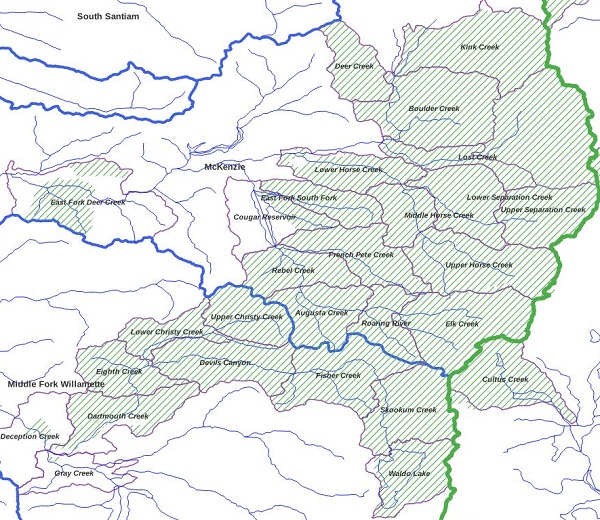Northwest Forest Plan must speak for the ecosystem
3 min read
by Dennis Boyer
Sustainability and biodiversity must be the standards for oversight of forests covered by the plan revisions considered by the U.S. Forest Service for the Pacific Northwest.
Sustainability in regard to our forests must be understood as a complete ecosystem framework that accounts for sensitive habitats, protection of water resources, health of wildlife populations, and impacts on human communities. It is not the same thing as commercially-driven “sustainable logging,” which often amounts to “tree farming” on public lands.
Biodiversity in regard to our forests must be understood in a broad fashion in terms of its ecosystem roles and its potential in restoration ecology. It requires a holistic understanding of the environmental, evolutionary, economic, and cultural processes that add up to sustain life on Earth.
Climate change and the growing complexities of the human-forest interface provide a number of challenges to protection and restoration of forests. Fire is a growing threat in many areas unaccustomed to periodic fire. Water resources are under threat in many areas and will likely face continued pressure.
The forested areas under consideration here represent an incredible natural and cultural resource for the people of the Pacific Northwest and the United States. These forests provide essential ecosystem services that reduce greenhouse gases, retain water and soil, harbor wildlife, and provide recreational opportunities. These forests also have the potential to support greater biodiversity and enhanced ecosystem stability and resilience.
We therefore call upon the U.S. Forest Service to advance a revised plan that accounts for the following:
Centers the plan on protection of all old growth and mature forests within the areas covered by
the plan, including:
- Protection of steep slopes and roadless areas from all logging
- Set ambitious goals to increase old growth and mature forest stock by 2050
- Plan to connect forest reserves and core wildlife areas with protected areas or corridors
- Ban all logging in old growth areas, even post-fire.
Elevates recognition of water resources in forest management, including:
- Protection and enlargement of forested watersheds that produce larger and cleaner amounts of water
- Increase riparian protection standards and require 70% canopy coverage in areas that provide, or could provide, salmonid habitat if protected from water warming
- Prioritize protection of forest watersheds that provide drinking water
- Study the use of “catchments” in suitable forest areas in order to capture run-off precipitation in order to recharge aquifers.
Recognizes the distinct character and needs in different areas under the plan, including:
- Inventory ecosystem services provided by forests and associated riparian areas
- Identify unique fire control and controlled burn areas
- Enhance cooperation with tribal governments and other public partners to achieve shared goals.
Dennis Boyer is a longtime Green Party activist and former owner/operator of a private certified sustainable forest. He currently hangs his hat in Gearhart, Oregon.
The Northwest Forest Plan (NWFP) directs forest management policies across 24 million acres on 17 national forests in Oregon, Washington, and California. The 21 members of the NWFP Federal Advisory Committee—which includes 11 members from Oregon—will provide modernization recommendations to the USFS. This public comment from Dennis and all public comments are available at the NWFP Reading Room.
Key watersheds within the Upper McKenzie and the Middle Fork Willamette basins are identified by the U.S. Forest Service at https://www.fs.usda.gov/r6/reo/library/maps.php.



